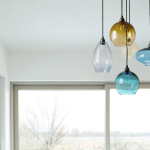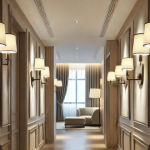Light bricks, also known as smart bricks, have been gaining popularity in recent years due to their innovative and eco-friendly features. In this article, we will explore what light bricks are, how they work, and their advantages over traditional bricks.
What are Light Bricks?
Light bricks are building blocks made from a variety of materials, including fly ash, cement, and sand. Unlike traditional bricks, which are made from clay and require energy-intensive firing in a kiln, light bricks are manufactured through a process of steam curing that requires less energy and produces less pollution.
Light bricks also differ from traditional bricks in terms of their weight and strength. Light bricks are much lighter than clay bricks, making them easier to transport and handle. However, they are also extremely durable and able to withstand high levels of pressure and impact.
How Do Light Bricks Work?
Light bricks are designed to be used in a variety of construction applications, including walls, floors, and roofs. They can be easily cut and shaped to fit any architectural design, and are available in a range of sizes and colors to match any aesthetic.
Perhaps one of the most innovative features of light bricks is their ability to produce and store energy. Some light bricks are equipped with solar panels that can capture and convert sunlight into electricity, while others are designed to absorb and retain heat from the sun to reduce energy consumption in buildings.
Advantages of Light Bricks
Eco-Friendly
One of the primary advantages of light bricks is their eco-friendliness. Compared to traditional bricks, light bricks produce fewer greenhouse gas emissions, consume less energy in manufacturing, and are often made from recycled materials.
Cost-Effective
Light bricks can also be more cost-effective than traditional bricks. Their lightweight and durable design means that they require less labor and transport costs, while their energy production and storage capabilities can help reduce overall energy costs in buildings over time.
Design Flexibility
Another advantage of light bricks is their design flexibility. Unlike traditional bricks, which typically come in one shape and color, light bricks can be easily molded and tailored to fit any architectural design. They can also be patterned and colored to create striking visual effects on buildings.
Conclusion
Light bricks are an innovative and eco-friendly alternative to traditional bricks. They are lightweight, durable, and have the ability to produce and store energy, making them ideal for a range of construction applications. As we continue to prioritize sustainability and energy efficiency in our built environment, the demand for light bricks is likely to grow.







